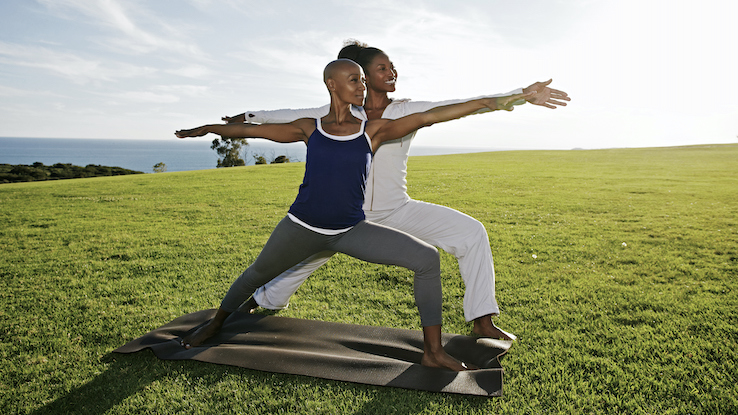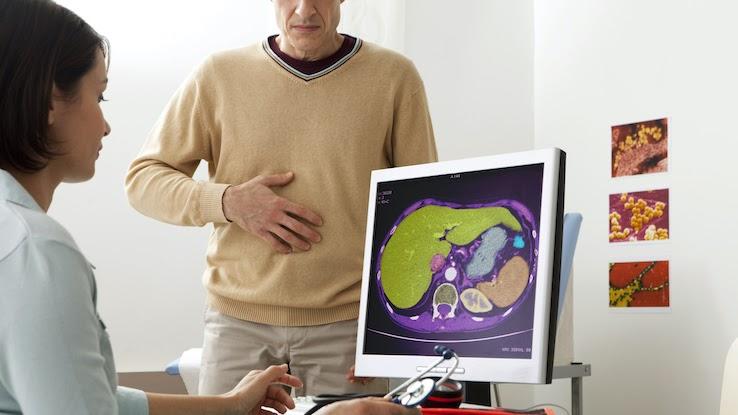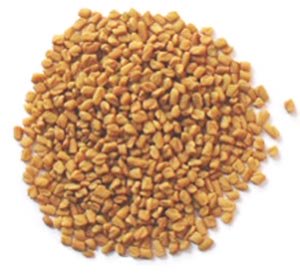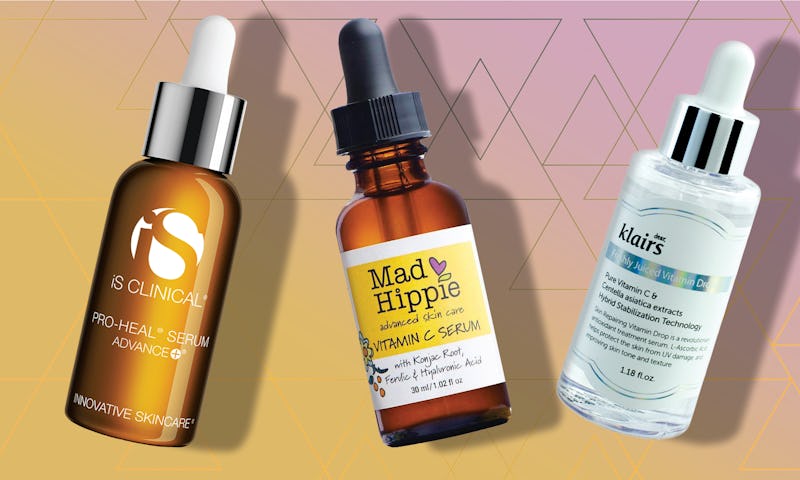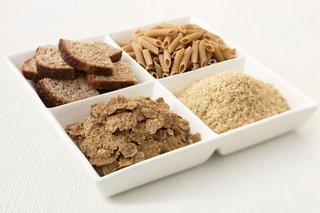KếT HợP Bha Vã Vitamin C
Randomized Controlled Trial
. 2017 Jan;105(1):136-143.
doi: 10.3945/ajcn.116.138594. Epub 2016 Nov 16.
Vitamin C-enriched gelatin supplementation before intermittent activity augments collagen synthesis
Affiliations
- PMID: 27852613
- PMCID: PMC5183725
- DOI: 10.3945/ajcn.116.138594
Free PMC article
Randomized Controlled Trial
Vitamin C-enriched gelatin supplementation before intermittent activity augments collagen synthesis
Gregory Shaw et al. Am J Clin Nutr. 2017 Jan .
Free PMC article
Abstract
Background: Musculoskeletal injuries are the most common complaint in active populations. More than 50% of all injuries in sports can be classified as sprains, strains, ruptures, or breaks of musculoskeletal tissues. Nutritional and/or exercise interventions that increase collagen synthesis and strengthen these tissues could have an important effect on injury rates.
Objective: This study was designed to determine whether gelatin supplementation could increase collagen synthesis.
Design: Eight healthy male subjects completed a randomized, double-blinded, crossover-design study in which they consumed either 5 or 15 g of vitamin C-enriched gelatin or a placebo control. After the initial drink, blood was taken every 30 min to determine amino acid content in the blood. A larger blood sample was taken before and 1 h after consumption of gelatin for treatment of engineered ligaments. One hour after the initial supplement, the subjects completed 6 min of rope-skipping to stimulate collagen synthesis. This pattern of supplementation was repeated 3 times/d with ≥6 h between exercise bouts for 3 d. Blood was drawn before and 4, 24, 48, and 72 h after the first exercise bout for determination of amino-terminal propeptide of collagen I content.
Results: Supplementation with increasing amounts of gelatin increased circulating glycine, proline, hydroxyproline, and hydroxylysine, peaking 1 h after the supplement was given. Engineered ligaments treated for 6 d with serum from samples collected before or 1 h after subjects consumed a placebo or 5 or 15 g gelatin showed increased collagen content and improved mechanics. Subjects who took 15 g gelatin 1 h before exercise showed double the amino-terminal propeptide of collagen I in their blood, indicating increased collagen synthesis.
Conclusion: These data suggest that adding gelatin to an intermittent exercise program improves collagen synthesis and could play a beneficial role in injury prevention and tissue repair. This trial was registered at the Australian New Zealand Clinical Trials Registry as ACTRN12616001092482.
Keywords: bone; exercise; inury prevention; ligament; return to play; tendon.
© 2017 American Society for Nutrition.
Figures

Schematic timeline of the study. PINP, N-terminal peptide of pro-collagen I.

Amino acid concentration in the serum after ingestion of 5 or 15 g vitamin C–enriched gelatin or a placebo control. The amount of (A) glycine, (B) proline, (C) HyPro, (D) lysine, (E) HyLys, and (F) leucine in the blood was determined by HPLC by the University of California, Davis Proteomics Core. The data are presented as means ± SEMs for the 8 subjects who completed the crossover study. The 2-factor ANOVA (treatment and time) indicated a significant time effect for all amino acids tested (P < 0.001). The interaction effect is noted on each graph. Treatment effects are noted beside the group as part of the legend. *Significant treatment effect relative to the placebo, P < 0.05.†Significant treatment effect relative to the 5-g group, P < 0.01. HyPro, hydroxyproline; HyLys, hydroxylysine.

Collagen concentration in engineered ligaments treated with PRE or serum isolated 1 h after ingestion of 5 or 15 g vitamin C–enriched gelatin or a placebo control. The (A) content of collagen and the (B) concentration of collagen (percentage of dry mass of the tissue) were determined after 6 d of treatment with media that were supplemented with 10% of the subject-derived serum. The data are presented as means ± SEMs for 6 constructs treated with the serum from a representative subject. These results were consistent with the use of serum from the 4 subjects who were tested by using this bioassay. *Significant difference from PRE, P < 0.05; ΨSignificant difference from placebo, P < 0.05. PRE, blood taken before supplementation.

Mechanics from engineered ligaments treated with PRE or serum isolated 1 h after ingestion of 5 or 15 g vitamin C–enriched gelatin or a placebo control. The (A) CSA of the engineered ligament as well as the (B) MTL, (C) modulus, and (D) UTS of the engineered ligaments were determined after 6 d of treatment with media that were supplemented with 10% of the subject-derived serum. The data are presented as means ± SEMs for 6 constructs treated with the serum from a representative subject. These results were consistent with the use of serum from the 4 subjects who were tested by using this bioassay. *Significant difference from blood before exercise, P < 0.05. CSA, cross-sectional area; MTL, maximal tensile load; PRE, blood taken before supplementation; UTS, ultimate tensile strength.

Collagen synthesis after exercise and ingestion of placebo or 5 or 15 g gelatin. (A) PINP concentration in the blood of subjects 4, 24, 48, and 72 h after the first exercise bout together with (B) the AUC for PINP concentrations from the placebo or 5- or 15-g gelatin groups. The data are presented as means ± SEMs for the 8 subjects who completed the crossover study. *Significant difference from placebo group, P < 0.05. †Significant treatment effect relative to the 5-g group, P < 0.01. PINP, N-terminal peptide of pro-collagen I.
Similar articles
-
Effects of Different Vitamin C-Enriched Collagen Derivatives on Collagen Synthesis.
Lis DM, Baar K. Lis DM, et al. Int J Sport Nutr Exerc Metab. 2019 Sep 1;29(5):526-531. doi: 10.1123/ijsnem.2018-0385. Int J Sport Nutr Exerc Metab. 2019. PMID: 30859848 Clinical Trial.
-
Native whey protein with high levels of leucine results in similar post-exercise muscular anabolic responses as regular whey protein: a randomized controlled trial.
Hamarsland H, Nordengen AL, Nyvik Aas S, Holte K, Garthe I, Paulsen G, Cotter M, Børsheim E, Benestad HB, Raastad T. Hamarsland H, et al. J Int Soc Sports Nutr. 2017 Nov 21;14:43. doi: 10.1186/s12970-017-0202-y. eCollection 2017. J Int Soc Sports Nutr. 2017. PMID: 29200982 Free PMC article. Clinical Trial.
-
Vitamin C and E supplementation prevents some of the cellular adaptations to endurance-training in humans.
Morrison D, Hughes J, Della Gatta PA, Mason S, Lamon S, Russell AP, Wadley GD. Morrison D, et al. Free Radic Biol Med. 2015 Dec;89:852-62. doi: 10.1016/j.freeradbiomed.2015.10.412. Epub 2015 Oct 19. Free Radic Biol Med. 2015. PMID: 26482865 Clinical Trial.
-
Efficacy of Vitamin C Supplementation on Collagen Synthesis and Oxidative Stress After Musculoskeletal Injuries: A Systematic Review.
DePhillipo NN, Aman ZS, Kennedy MI, Begley JP, Moatshe G, LaPrade RF. DePhillipo NN, et al. Orthop J Sports Med. 2018 Oct 25;6(10):2325967118804544. doi: 10.1177/2325967118804544. eCollection 2018 Oct. Orthop J Sports Med. 2018. PMID: 30386805 Free PMC article. Review.
-
Collagen supplementation for skin health: A mechanistic systematic review.
Barati M, Jabbari M, Navekar R, Farahmand F, Zeinalian R, Salehi-Sahlabadi A, Abbaszadeh N, Mokari-Yamchi A, Davoodi SH. Barati M, et al. J Cosmet Dermatol. 2020 Nov;19(11):2820-2829. doi: 10.1111/jocd.13435. Epub 2020 May 21. J Cosmet Dermatol. 2020. PMID: 32436266 Review.
Cited by 32 articles
-
Potential Relevance of Bioactive Peptides in Sports Nutrition.
König D, Kohl J, Jerger S, Centner C. König D, et al. Nutrients. 2021 Nov 10;13(11):3997. doi: 10.3390/nu13113997. Nutrients. 2021. PMID: 34836255 Free PMC article. Review.
-
Protein Requirements for Master Athletes: Just Older Versions of Their Younger Selves.
Moore DR. Moore DR. Sports Med. 2021 Sep;51(Suppl 1):13-30. doi: 10.1007/s40279-021-01510-0. Epub 2021 Sep 13. Sports Med. 2021. PMID: 34515969 Free PMC article. Review.
-
Is "Delayed Onset Muscle Soreness" a False Friend? The Potential Implication of the Fascial Connective Tissue in Post-Exercise Discomfort.
Wilke J, Behringer M. Wilke J, et al. Int J Mol Sci. 2021 Aug 31;22(17):9482. doi: 10.3390/ijms22179482. Int J Mol Sci. 2021. PMID: 34502387 Free PMC article. Review.
-
The effects of collagen peptide supplementation on body composition, collagen synthesis, and recovery from joint injury and exercise: a systematic review.
Khatri M, Naughton RJ, Clifford T, Harper LD, Corr L. Khatri M, et al. Amino Acids. 2021 Oct;53(10):1493-1506. doi: 10.1007/s00726-021-03072-x. Epub 2021 Sep 7. Amino Acids. 2021. PMID: 34491424 Free PMC article. Review.
-
Monitoring urinary collagen metabolite changes following collagen peptide ingestion and physical activity using ELISA with anti active collagen oligopeptide antibody.
Osawa Y, Nomura K, Kimira Y, Kushibe S, Takeyama KI, Nagao M, Kataoka-Matsushita A, Koizumi S, Mano H. Osawa Y, et al. Sci Rep. 2021 Jun 29;11(1):13527. doi: 10.1038/s41598-021-92934-1. Sci Rep. 2021. PMID: 34188133 Free PMC article. Clinical Trial.
Publication types
MeSH terms
Substances
LinkOut - more resources
-
Full Text Sources
- Europe PubMed Central
- PubMed Central
- Silverchair Information Systems
-
Other Literature Sources
- scite Smart Citations
-
Medical
- ClinicalTrials.gov
- MedlinePlus Health Information
Source: https://pubmed.ncbi.nlm.nih.gov/27852613/








